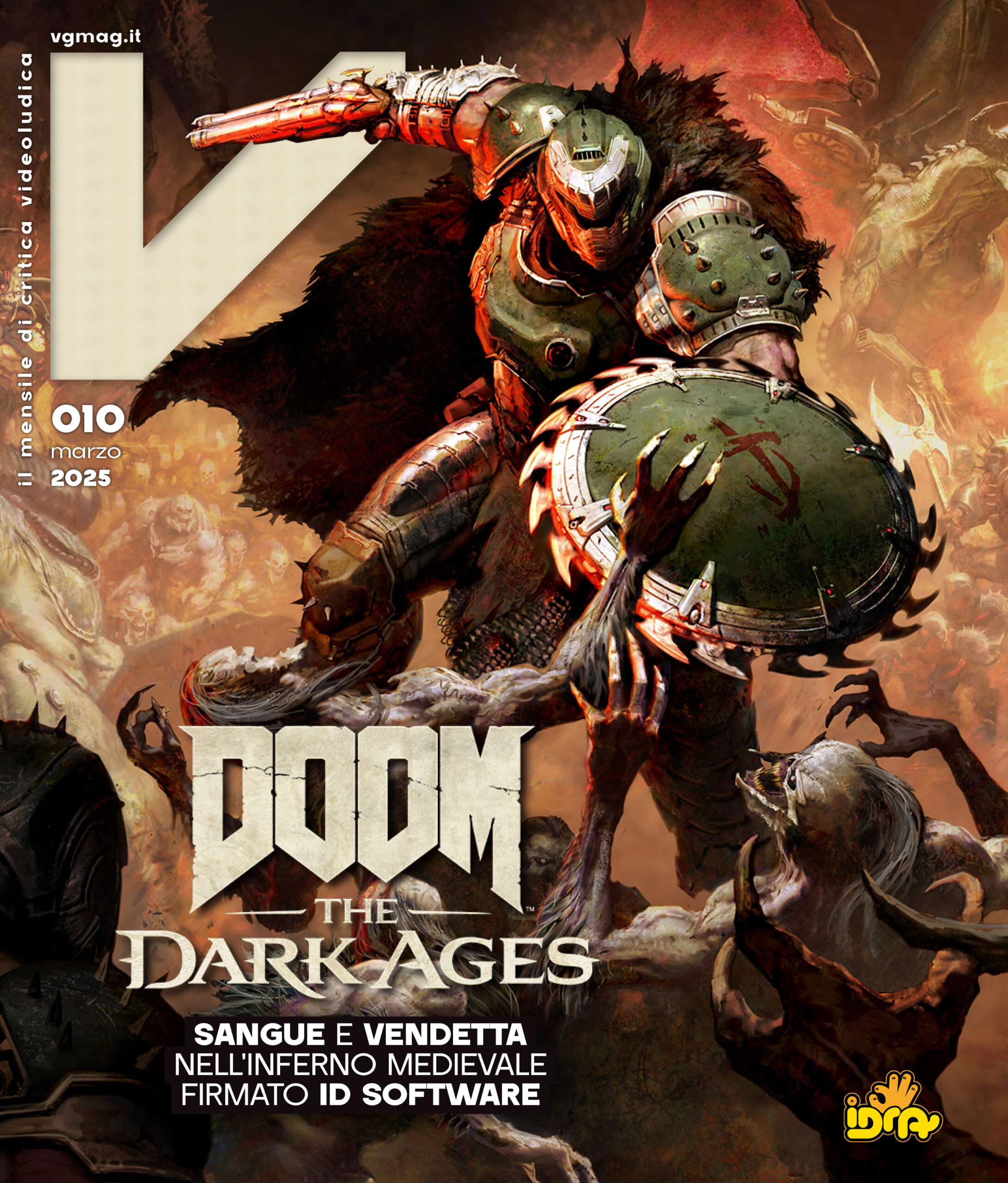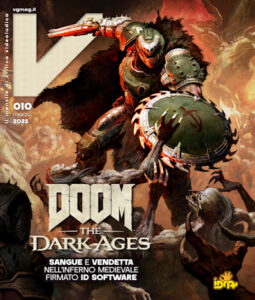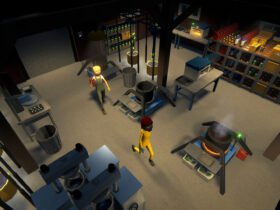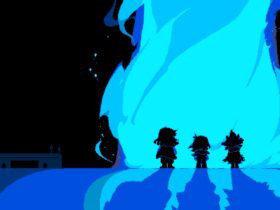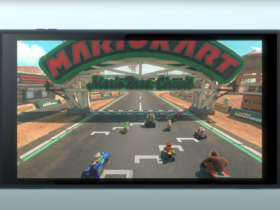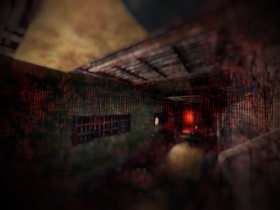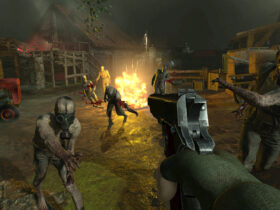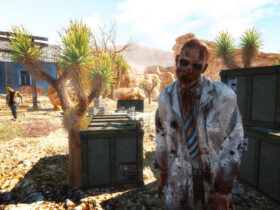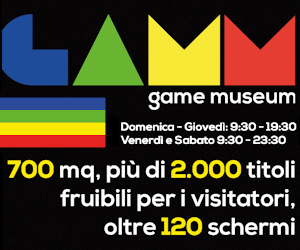 Today, vrgamer.it hosts a special guest: Ryan Anderson, Project leader of Spectre Seekers, an horror game which took part to 2013 IndieCade VR Jam. Let’s listen to Ryan’s own words!
Today, vrgamer.it hosts a special guest: Ryan Anderson, Project leader of Spectre Seekers, an horror game which took part to 2013 IndieCade VR Jam. Let’s listen to Ryan’s own words!
F: Hi Ryan! First and obvious question: can you tell us how does Spectre idea started?
 R: Hi Federica!
R: Hi Federica!
I’d say the idea for Spectre developed from a couple different things. First, there is a notable lack of multiplayer games designed for the Oculus Rift. To me, one of the most exciting elements of virtual reality gaming is the potential for players to exist in a virtual space together. A multiplayer VR game is something I have wanted to see, so naturally, incorporating multiplayer into my own game was an appealing idea.
Then there’s Spectre’s gameplay. I own a Wii U. For quite a while, the only game I owned for it was Nintendo Land. In college, I had three roommates who were all game designers and programmers, and we all used to play Nintendo Land together. There were a few mini games we really enjoyed, but our favorite was Luigi’s Ghost Mansion. For anyone who hasn’t played it before, the game is essentially two-way tag. One of us was “it,” and he was trying to catch the rest of us. At the same time, the rest of us were also trying to catch him. We got a kick out of that game because for one, everyone loves tag. There’s a thrill of chasing and being chased. But also, the game did a great job balancing asynchronous gameplay so that playing was fun whether you were on your own or with a team. That fun, asynchronous gameplay is something I wanted to create, and it is taking form in Spectre.
F: Oculus Rift was part of Spectre Project from the beginning, but why?
R: I love the Oculus Rift. Everyone on my team loves the Oculus Rift. Everyone I’ve ever shown the Rift to has been mesmerized. I want to make exciting experiences, and the Oculus Rift is the most exciting thing I’ve experienced in a long time. So that’s why the Oculus Rift is part of Spectre. But why was it a part from the beginning? Well, the project started as an entry for the 2013 IndieCade VR Jam. The competition had very few restrictions, but the obvious one was that the game we made had to use the Oculus Rift. The VR Jam was the perfect excuse to turn the idea into a game, so I rallied a team together and we began developing Spectre for the Oculus Rift.
 F: I know you are a truly multicultural team. You work with people from Germany and UK, if I remember well. How did you sustain the effort of developing Spectre Seeker?
F: I know you are a truly multicultural team. You work with people from Germany and UK, if I remember well. How did you sustain the effort of developing Spectre Seeker?
R: That is correct. We’re all over the place. Our remote locations present one of the biggest challenges for development. Due to our separate locations and time zones, we must remain aware of everyone’s availability. Some of the most productive sessions are when we are all talking together as a group. However, since it’s often the case that not everyone can be available at the same time, I make sure to speak with team members individually when they have time. Everyone has a set of tasks, and they are working on completing those tasks for the rest of the team to work with. Skype has been an invaluable tool for communication, and we use documentation and file sharing tools to regulate version control and asset sharing.
F: This is very curious for us: all of you speak English, I guess, so why the spectre whispers in Italian?
R: For this question, I’ll direct you to Louis Arrigoni, our Audio Designer and guy you can blame for most of the terrifying sound effects in our game.
L: I wanted the whispers to have an ancient cryptic feel, but felt recording the audio in Latin or a made up language might sound odd unless done well. To me, Italian was the next best choice! A very beautiful and old language, which the majority of our players won’t understand. My stepdad is Italian and the chair of the Dante Allighieri Society in my hometown, as well as having Italian roots in my family (hence my surname), so my Mother lent a hand in writing some scary lines and voicing them.
 F: Singleplayer VS Multiplayer, Spectre Seeker has both of them. Don’t you think it could be dangerous? Horror experience and multiplayer don’t get along very often. I’m thinking about Dead Space.
F: Singleplayer VS Multiplayer, Spectre Seeker has both of them. Don’t you think it could be dangerous? Horror experience and multiplayer don’t get along very often. I’m thinking about Dead Space.
R: Well with almost any genre, multiplayer is easy to mess up. That’s part of the reason we’ve been taking more time to create it. The simple goal is for the multiplayer to be entertaining. Calling back to Luigi’s Ghost Mansion– that was a game that had fun gameplay at its core. We’re using a similar template to build Spectre’s multiplayer. We’re targeting the thrill of chasing and being chased.
As you’ve already seen in Spectre’s single player preview, getting chased by the Spectre is really freaking scary. You know the only thing scarier than being stalked by that AI-controlled Spectre? Being stalked by the Spectre controlled by your cunning friend whose sole mission in life has become giving you a heart attack for his own pleasure. And when you get your turn to play as the Spectre, it will be your mission to return the favor. Playing with a Rift only heightens that thrill by immersing players in the game’s environment.
F: Spectre Seeker was among the finalist indie games in IndieCade VR Jam competition. What about that experience? Do you think it’s important to stimulate indie development?
R: The IndieCade VR Jam competition was a wonderful experience. Firstly, it was intense. We had three weeks to make a game. I had the idea, I recruited the talent, and for three weeks, we slaved away at our computers, determined to finish in time. We eating, stopped sleeping, and grew distant from our loved ones, pouring every fiber of our being into our project.
Ok, so that is a slight dramatization, but really we were all very motivated, committed, and productive, and I’m proud of how hard we all worked and what we created. When we found out Spectre had made it as a finalist, we were all overjoyed. It was a proof of concept, and the determining factor in whether or not we’d continue development on the game.
The VR Jam was brilliant in that it acted as a catalyst for the development of many new great experiences for the Oculus Rift. I was impressed by all of the finalist games I played from the VR Jam, and like Spectre, some of them have seen continued development thanks to Oculus’ support and the support of the community. The Rift needs more than just compatibility with traditional games. It needs unique experiences developed from the ground up for VR, and indie developers are at the forefront of that development.
 F: The amount of horror game for the Oculus Rift it’s impressive. Why? Is it a good combination?
F: The amount of horror game for the Oculus Rift it’s impressive. Why? Is it a good combination?
R: I believe fear is one of the easiest emotions to evoke. I don’t mean that in a negative way. To evoke fear, a game doesn’t need to spin an elaborate story full of richly developed characters. It simply needs to immerse players in its environment and do something spooky. As anyone who’s tried it would agree, the Oculus Rift is extremely immersive. Players are much more absorbed than if they were looking at a normal computer screen. The more immersed a player is, the more sensitive he’ll be to everything that happens within the game. On the most basic level, that means a skeleton popping out will be scarier with a Rift than without. In other words, horror and immersion go hand in hand, and the Oculus Rift is about as immersive as it gets.
F: Sound design it’s very important specially in horror game and even more in virtual reality horror game. How does total immersivity change sound design rules?
R: In virtual reality, the player isn’t watching from outside a window. The player feels as though his physical body exists within a space in the game’s environment. Because of that positional awareness, effective 3D sounds can help immerse the player even deeper. In Spectre, for example, the player will often hear something before he sees it. By turning his head, the player can hone in on the direction of the audio source.
 F: We all know the game is currently in development, can you give us some anticipation about new features? And when will it be released?
F: We all know the game is currently in development, can you give us some anticipation about new features? And when will it be released?
R: Well, the multiplayer mode as a whole is something we’re excited to show when it’s ready. A lot of gameplay mechanics that aren’t present in the single player mode will exist in multiplayer. The multiplayer is all about freaking each other out. The Spectre has in its arsenal a number of traps it can set for the sole purpose of startling and disorienting the other players. One trap we’re developing that I’m particularly excited about is an “imposter” trap. Say the Spectre catches one of your teammates. Well, that teammate becomes immobilized and must wait for a friend to come to his aid. The Spectre can create images of immobilized teammates. These false teammates lure players close. Then, when the player is close enough to rescue, the imposter leaps up and grabs the player, holding them in place for a period of time, completely vulnerable to the Spectre’s approach. We’re looking forward to watching the different ways people scare each other.
As for the game’s release, we’re shooting to finish the game for early next year.
F: And finally, any project for the next future? Where will be Spectre team in 5 years?
R: We have a couple ideas. I’ve named the team “Proscenium” with the intent to use our name for future projects. But right now, the focus is all on Spectre. It’s really an exciting time, because most of us are still in or just out of college. We’re enjoying making a cool game for cool hardware, and we’re loving the reactions our game evokes. I am looking forward to completing Spectre and discovering where it brings us.
We thanks Ryan and all Spectre team for this wonderlfull interview. If our readers want to know any further information about Spectre Seeker, just click spectregame.com or link to Spectre facebook page.
Clicca sulla copertina per leggere



